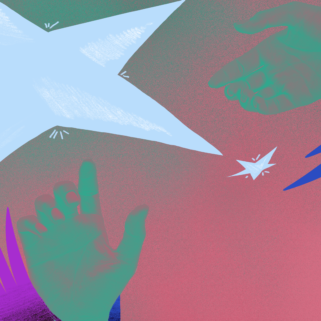Fifty-six years ago, a flyer around downtown New Haven sought subjects for a social psychology study. Volunteers found themselves in the basement of Linsly-Chittenden Hall, in Professor Stanley Milgram’s lab. Milgram, who was investigating obedience to authority, commanded his subjects to shock someone else with increasing voltages of electricity until they refused. Before they were debriefed, volunteers thought they had actually caused another human being intense pain, and, perhaps, depending on how far they went, death. For their hour of service, Milgram paid his volunteers $4.00, plus an extra $.50 for car fare.
Though it’s now considered “unethical” for experimenters to make you think you murdered someone, university researchers still need volunteers to carry out their research. And many undergraduates are eager to serve as human guinea pigs in exchange for some fast cash. As with many things at this school, I first heard of paid studies through a panlist. Yi-Chia Chen, a grad student in the Psychology Department, was sending me emails on behalf of the Perception and Cognition Lab before I even attended my first class at Yale. So, what is it actually like to participate in these studies? And why do certain students seek them out so fiercely?
Given how neatly the weekly emails are formatted, I expected that these experiments would involve complex procedures and high-tech equipment. At least electrodes, if not lasers. Instead, I was left in a dark room with only a desktop computer (not even a Mac) on the third floor of SSS, where I participated in two underwhelming 30-minute studies.
The first study was an almost-fun game: all I had to do was move my mouse to evade little arrows chasing my cursor. But the second was the most monotonous half hour of my life. I was presented with pairs of swan-like creatures, two-dimensional and white but with too many wings. I had to pick which I preferred (an easy task because I’m great at arbitrarily applying human beauty standards to non-human entities). Though I had ample time to contemplate my tasks, I couldn’t decipher the points of these exercises until my experimenter “debriefed” me—which was just an explanation of the hyper-specific phenomenon they were testing; not nearly as exciting as the sleek word “debrief” might imply. I guess SSS isn’t the CIA, even though I was paid with what had once been government grant money. The experimenter slipped me a crisp $5 bill after each study. That weekend, wanting to invest my hard-earned money in the local economy, I went to Junzi’s Night Lunch and spent the $10 on a rice bowl and iced tea.
The next week, I stumbled through the intimidatingly-clean chrome-and-blue corridors of the School of Management until I found the spartan basement where the SOM Lab conducts its studies. The activity I participated in had something to do with game theory and was complicated enough that I still haven’t received full payment—my reward will depend on decisions that another participant made; I’m either due another $20 on top of the $10 they gave me, or I’m shit out of luck. The next day, I made the schlep up Whitney Avenue again for a second study. This one was basically online shopping, and much more up my alley: it involved picking between differently priced merchandise in each trial. After 30 minutes, I left with $13 dollars and a ceramic Yale-brand tumbler, one of the merchandise combos I had chosen. Unfortunately, it fell off my nightstand and shattered before I could even write about how excited I was to make martinis with it.
Unlike me, some students who engage in these paid studies are looking for more than bartending accoutrements. Ryan Mera Evans, who is taking time off from Yale and doesn’t have access to student jobs, speaks in devil-may-care socialist lingo that reflects his stance: “My ass is just broke and unemployed for several months now, kind of like scratching by. And studies are a mainstay on the circuit to establish some sort of financial autonomy outside of traditional work.” He has taken to strolling around campus looking at bulletin boards to see if any new posters have been put up. “This is a means of getting money that I’m required to have in order to fucking live… So, it’s work.”
And others still are just opportunistic money-grubbers. The catchiest posters are those searching for “healthy, lean, and sedentary” volunteers. Sophomore Louis DeFelice fits the criteria, and has done the study twice, making $200 each time in return for chugging a glucose solution, spending four hours on an IV, wearing a pedometer for three days, and finally suffering through an MRI at the School of Medicine (he is claustrophobic). But for him, “the money is really tempting,” and his phobia matters less than the paycheck: “If you think you’re going to be in there for 40 minutes and you’re gonna get $200, I don’t know… It’s a good hourly wage.” Besides involving more whirring metal tubes, the most extreme study he has done required him to fast for 48 hours, during midterms, on his birthday. (It paid close to $1000.) I felt compelled to ask him what he wouldn’t do. “There’s this famous experiment where these strangers come into a room and they’re delivering electric shocks to someone in another room…”
If you’re willing to put up with a half hour of tedium—or just want some compensation for researching a story—there’s petty cash to be made on campus. But the big bucks wait for those who chase these studies out of economic necessity or financial desire, sacrificing their time and bodies for cash: the true lab rats of Yale.


